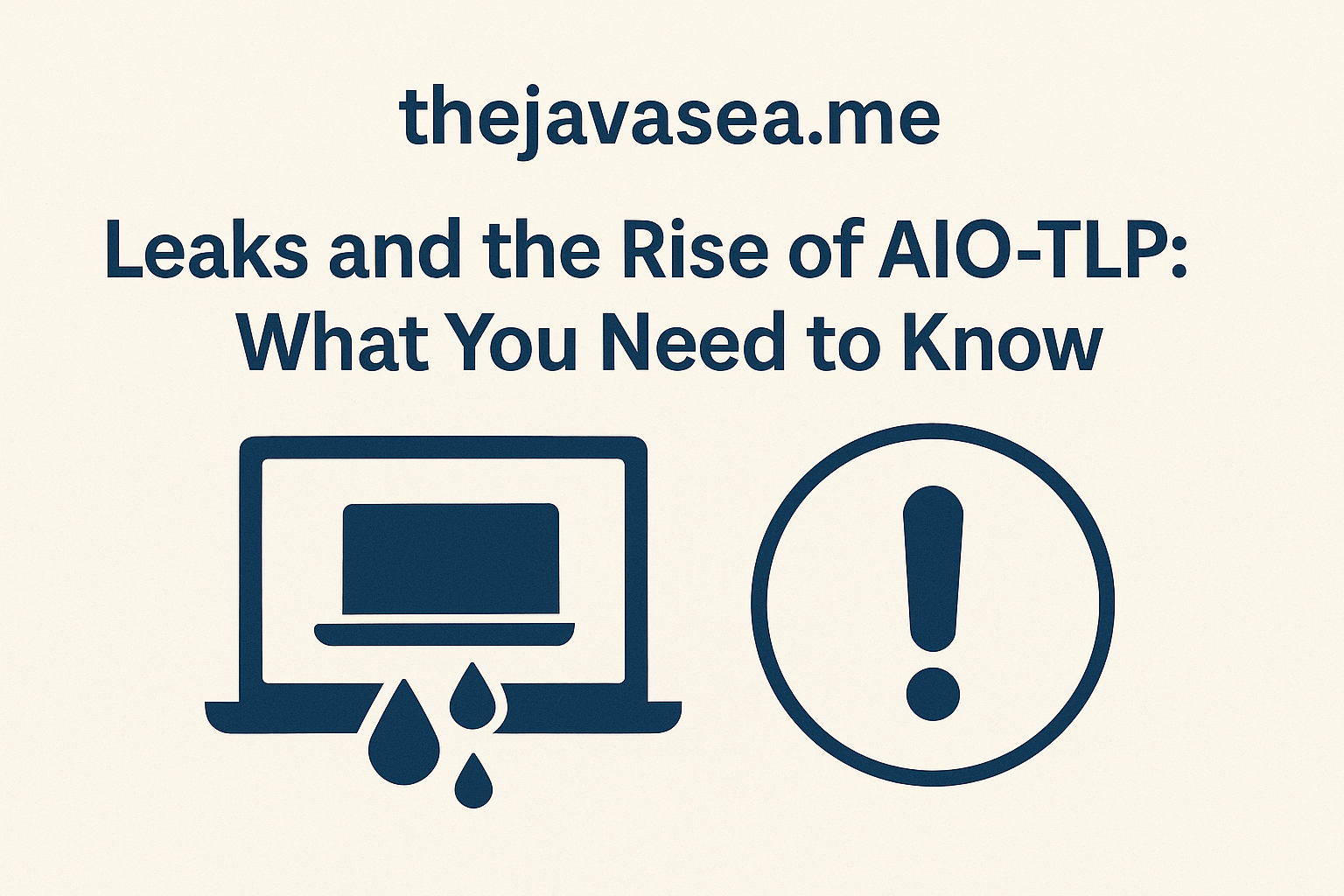The cyber landscape has been abuzz with discussions surrounding a relatively obscure but increasingly talked-about website: thejavasea.me. Originally known to a niche audience, this domain has caught widespread attention due to a series of alleged leaks that have been circulating on various platforms. Among these, the term “AIO-TLP” has frequently surfaced, sparking curiosity and concern alike. But what exactly is going on behind the scenes, and what does it mean for digital security, data ethics, and the broader internet community?
The Origin of thejavasea.me
The website thejavasea.me first gained traction within underground digital circles. Its name evokes a sense of mystery—possibly derived from the Java Sea, a maritime area in Southeast Asia known for both trade routes and shipwrecks. Similarly, the website has become a “shipwreck” of digital data, allegedly hosting and distributing leaked content from various sources.
Understanding the Leaks
The term “leaks” in this context refers to the unauthorized release of sensitive, private, or confidential data—often including personal information, documents, photos, or software. While many leaks tend to focus on celebrity content or government information, the leaks associated with thejavasea.me have been more eclectic.
Reports from digital watchdogs suggest that thejavasea.me hosts a variety of leaked content, ranging from educational materials and software tools to more controversial files that blur the lines between ethical whistleblowing and outright privacy violation. What makes thejavasea.me stand out is the AIO-TLP classification system it seems to use, which adds another layer of complexity to the platform.
Decoding AIO-TLP
AIO-TLP appears to be an internal tagging or categorization scheme used within thejavasea.me’s ecosystem. Though not officially defined in public forums, cyber analysts suggest that AIO-TLP may stand for “All-In-One – Traffic Light Protocol”. The Traffic Light Protocol (TLP) is a widely accepted classification system used to indicate how sensitive information should be shared, often represented in colors—Red, Amber, Green, and White.
In the context of thejavasea.me, the AIO-TLP structure might refer to a set of “bundles” or categorized leak packages, each tagged with a color code denoting their sensitivity or sharing rules. For example:
-
AIO-TLP: Red might signify content meant only for trusted insiders.
-
AIO-TLP: Green might be available for wider public consumption.
-
AIO-TLP: Amber could suggest limited or conditional sharing.
This system, while echoing legitimate cybersecurity practices, is being used in an entirely different—and ethically questionable—context on the site.
Legal and Ethical Implications
The rise of platforms like thejavasea.me highlights an ongoing battle between information freedom and privacy rights. While whistleblower platforms like WikiLeaks have sparked debates around transparency and accountability, thejavasea.me appears to lack the journalistic or political pretenses that once characterized such leaks.
The distribution of AIO-TLP-tagged packages raises serious concerns. Is this a case of digital piracy rebranded under a clever taxonomy? Or are these leaks truly revealing important truths that would otherwise remain buried? Legal experts argue that the former is far more likely, as most leaked packages contain copyrighted or proprietary content, rather than information in the public interest.
The hosting and access of such materials—even passively—can place users at legal risk. Depending on jurisdiction, simply downloading or distributing certain leaks may violate national cybersecurity laws, data protection acts, and intellectual property rights.
The Community Behind the Curtain
What is perhaps most intriguing about thejavasea.me is not just the content, but the community that fuels it. Forums and invite-only chat groups have sprouted up where users exchange access credentials, discuss new leak drops, and speculate on upcoming “packages.” The use of AIO-TLP as a buzzword has given this community an internal language—a form of digital elitism that separates insiders from outsiders.
Interestingly, some members claim that their intent is not malicious, but educational. They argue that exposing vulnerabilities in systems or shedding light on hidden knowledge serves a greater good. However, without oversight or verification, these claims often fall flat.
The Bigger Picture: What Should Users Do?
If you’ve stumbled across references to thejavasea.me leaks or AIO-TLP packages, it’s important to proceed with caution. Here are a few critical steps to protect yourself:
-
Avoid accessing unverified or suspicious sites that may host leaked data. These can also be breeding grounds for malware and phishing.
-
Use cybersecurity tools such as VPNs, antivirus software, and encrypted browsers when navigating lesser-known corners of the internet.
-
Report illicit content to appropriate authorities or cybersecurity firms who can investigate and respond accordingly.
Thejavasea.me remains a digital enigma. Whether it eventually fades into obscurity or sparks a new wave of underground sharing communities remains to be seen. But what’s clear is that platforms like this are challenging traditional notions of privacy, legality, and access in the information age.





